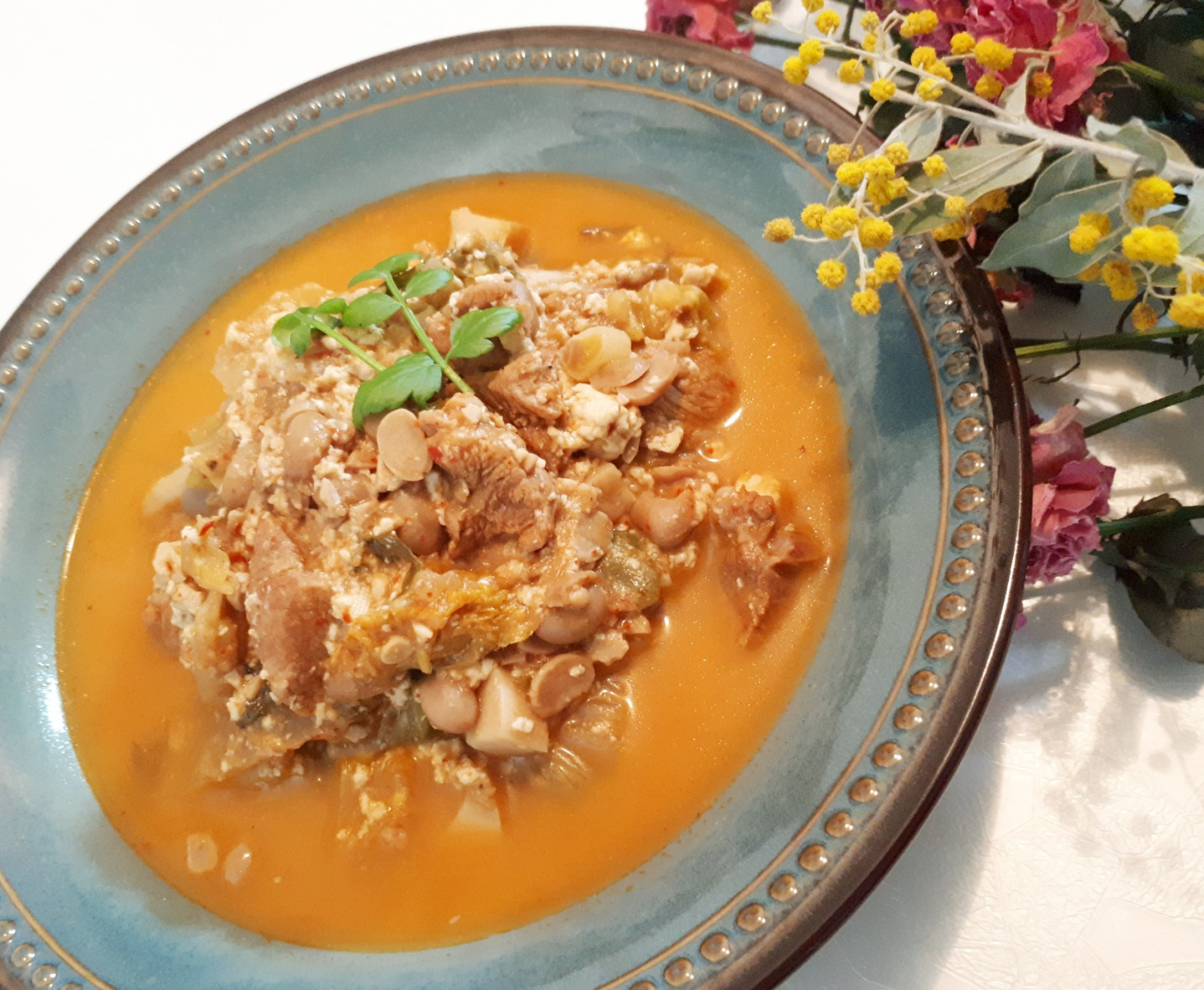Mom’s Authentic Cheonggukjang Stew: A Guide to Rich and Savory Flavor
How to Make Delicious Cheonggukjang Stew Just Like Mom Used to Make

Remember the comforting aroma of cheonggukjang stew your mom used to make on winter days? This recipe aims to recapture that nostalgic taste of home. It’s so delicious, even my picky eater son devoured it! Get ready for a hearty, flavorful stew that’s perfect with rice.
Stew Ingredients- Cheonggukjang (fermented soybean paste) 2 blocks (or 1 block cheonggukjang + 1 Tbsp doenjang if using homemade)
- Well-fermented kimchi (aged kimchi) 1/2 small head
- Pork (stew-cut) 300g
- Tofu 1 block
- Oyster mushrooms 1 handful
- King oyster mushrooms 2
- Green onion 1 stalk
- Korean green chili peppers 2 (optional)
Seasoning & Marinade- Minced garlic 1 Tbsp
- Perilla oil 1 Tbsp
- Ground black pepper a pinch
- Minced garlic 1 Tbsp
- Perilla oil 1 Tbsp
- Ground black pepper a pinch
Cooking Instructions
Step 1
Let’s start by preparing the kimchi. Chop half of a small head of well-fermented, aged kimchi, or about one-third of a large head, into bite-sized pieces (about 1.5 cm wide). Add 300g of pork cut for stew. This recipe makes approximately 4-5 servings.

Step 2
Now, let’s season the ingredients. Add 1 Tbsp of minced garlic, a pinch of ground black pepper, and 1 Tbsp of perilla oil to the kimchi and pork. Mix them thoroughly with your hands to ensure the seasonings are well incorporated. Marinating the pork beforehand adds a deeper flavor to the stew.

Step 3
Take a deep pot and sauté the seasoned kimchi and pork first. Once the pork is almost cooked through, pour in 2 to 3 mugs of water (about 400-600ml) and boil vigorously for 5 minutes. This allows the flavors of the kimchi and pork to meld beautifully.

Step 4
Time to prepare the mushrooms and vegetables. Trim the ends of the oyster mushrooms and king oyster mushrooms and slice them into appropriate sizes (about 1 cm thick). Slice the green onion diagonally and finely chop the Korean green chili peppers. If you prefer a milder stew, you can omit the green chili peppers.

Step 5
Now it’s time to add the cheonggukjang. If you’re using homemade cheonggukjang, roughly crumble the blocks with your hands. We tend to use a generous amount of cheonggukjang in our home. If you’re using store-bought cheonggukjang, you can mix one block with 1 Tbsp of doenjang (soybean paste).

Step 6
Add the crumbled cheonggukjang to the pot and stir it well with the broth. It’s best to add cheonggukjang later in the cooking process rather than boiling it for too long, as prolonged boiling can diminish its beneficial nutrients. Add it towards the end and simmer gently.

Step 7
Prepare one block of tofu. Instead of cubing it, I like to roughly crumble the tofu with my hands before adding it. This way, when you mix the stew with rice, the rice soaks up plenty of the savory broth, making it even more delicious! If the stew isn’t salty enough, adjust the seasoning with salt.

Step 8
Finally, simmer for another 5 minutes to allow all the flavors to meld together. Your rich and savory cheonggukjang stew is now complete! Enjoy it with a hot bowl of rice.



